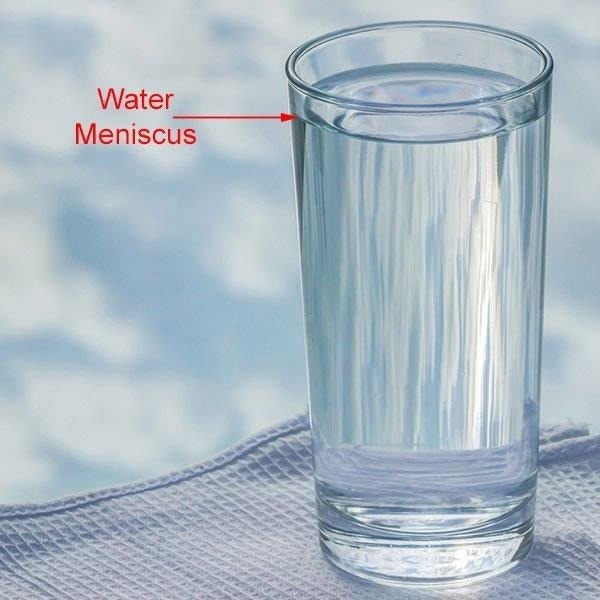Density, denoting the relationship between mass and volume or weight and volume, is a crucial metric for systems that link weight to volume, particularly in mixing or dispensing applications.
Traditional volume measurement methods, like measuring cups, spoons, or pipettes, lack precision. Determining the density of a liquid or coating enables us to accurately measure volumes by weight or mass, utilizing a high-resolution scale.
To achieve this, it is essential to know the material's density. The challenge lies in precisely measuring the material's volume to calculate its density. The solution is density cups.
Precise Volumes
Density cups are crafted with a highly accurate volume. Liquid density can be computed by filling the container to this specific volume and weighing it. A significant hurdle in achieving precise volume filling is the meniscus.
Liquids display cohesion, where individual molecules attract each other. Consequently, filling a container to its absolute top may result in a small liquid mound extending beyond the container's rim, called the meniscus.
How to Use a Density Cup
Meniscus indicates that the liquid volume in the container slightly exceeds the container's volume. To address this, density cups come equipped with a precisely fitted lid featuring a small center hole and a rim that slightly extends into the cup.
Overfill the cup with more liquid than necessary. Place the lid on top, allowing excess material to flow through the hole. Wipe away the surplus, and the cup is filled with the correct amount of liquid.
Next, weigh the liquid in grams. This can be achieved by zeroing the scale before filling the cup or using a tare weight, ensuring that only the liquid's mass is measured.
It is important to note that bubbles in the liquid can disrupt a density measurement. If the material requires vigorous shaking or mixing, leading to bubbles, it is advisable to perform the mixing well before the density measurement, allowing the bubbles adequate time to settle.

Image Credit: Paul N. Gardner Company, Inc.

Image Credit: Paul N. Gardner Company, Inc.
Once the liquid's mass in grams is established, calculating density becomes straightforward. For US density cups, boasting a volume of 83.2 ml, a simple division of the liquid's mass in grams by 10 yields the density in pounds per gallon (lbs/gal).
US Mini Weight Per Gallon Cups, with a volume one-tenth that of standard cups (8.32 ml), exhibit a unique feature—the mass of the liquid in grams is identical to the density in lbs/gal. These cups also offer the advantage of requiring less material for measurement.
For imperial or ISO density cups, having volumes of either 50 or 100 ml, the density calculation involves dividing the liquid's mass in grams by the cup's volume, resulting in the density expressed in grams per ml (g/ml or g/cm3).
Once the liquid's density is known, any desired volume can effortlessly be converted to mass or weight and measured using a scale.
Source: Paul N. Gardner Company, Inc.
| Determination of Density and Specific Gravity |
| Model |
Volume (ml) |
Density |
Specific Gravity (relative to water) |
| U.S. Standard Cup: |
83.2 |
[weight full (g) - weight empty (g)] x 0.1 = lbs/gal |
[weight full (g) - weight empty (g)] x 0.01202 = specific gravity |
| U.S. Mini Cup: |
8.32 |
[weight full (g) - weight empty (g)] = lbs/gal |
[weight full (g) - weight empty (g)] x 0.1202 = specific gravity |
| ISO Cup: |
100 or 50 |
[weight full (g) - weight empty (g)] / volume (ml) = g/cm3 |
specific gravity = density |
| British Imperial Cup: |
100 |
[weight full (g) - weight empty (g)] / volume (ml) = g/cm3 |
specific gravity = density |
1 ml = 1 cm3; 1 liter = 1000 ml; specific gravity of water = 1 g/ml
1000 ml = 0.2646 U.S. gallon; 1 U.S. gallon = 3.785 liter |

This information has been sourced, reviewed and adapted from materials provided by Paul N. Gardner Company, Inc.
For more information on this source, please visit Paul N. Gardner Company, Inc.